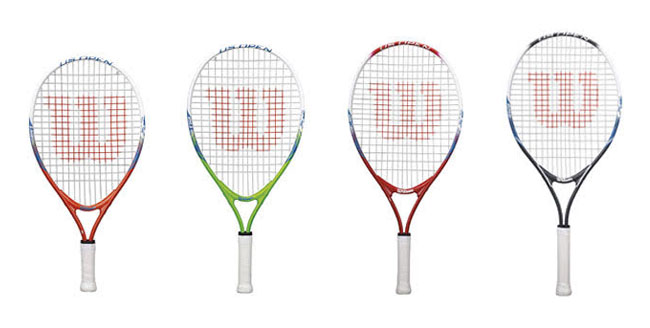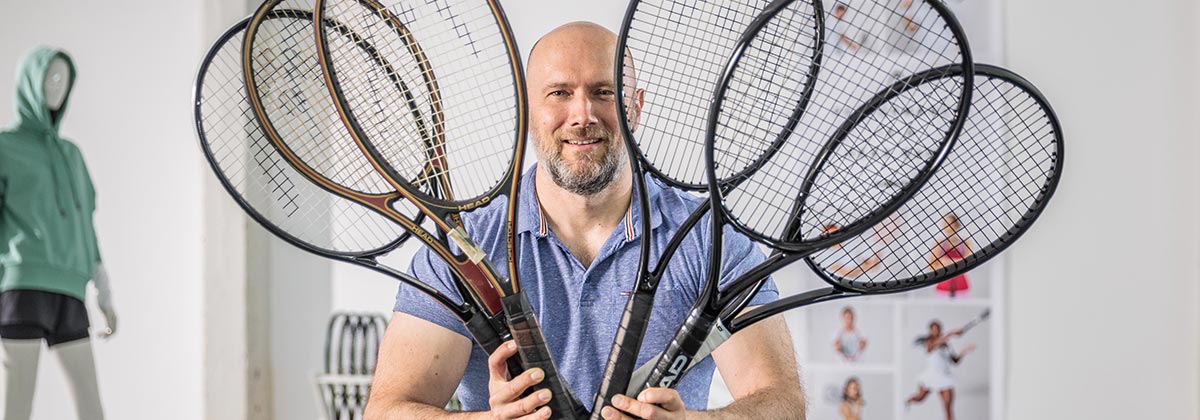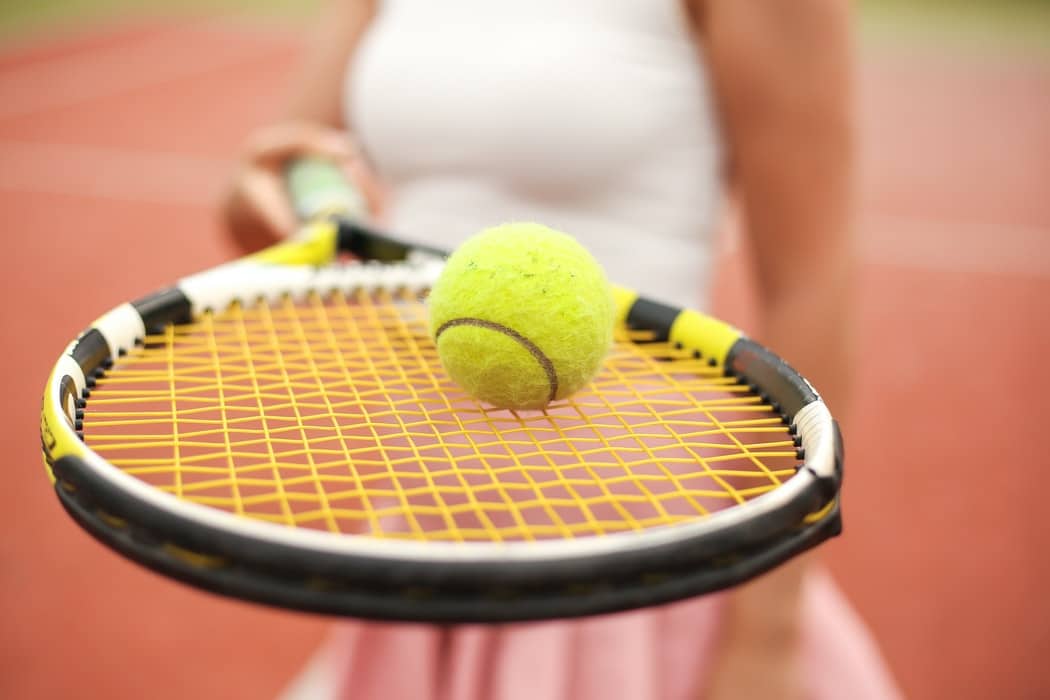Material and other characteristics must be taken into account
All “adult” rackets can be divided into three types:
- amateur;
- club;
- sports.
At first sight it seems simple. Amateur rackets are suitable for beginners, club – for tennis players with an intermediate level of play, sports – for those who already regularly compete.
In practice everything is a little bit more complicated. If for high-level tennis players the choice is limited only to sport rackets (otherwise their level of play and potential will inevitably suffer), the beginners are free to choose a racket in all three categories.

What materials are tennis rackets made of?
Aluminum
Used in the manufacture of amateur rackets. The main advantages: low weight and low price.
Composite materials
Rackets with this label are made of a combination of aluminum and graphite. Essentially, they are the same as amateur racquets, but with better playing characteristics.
Graphite
The main material for making modern racquets. It is very strong and at the same time light; as a consequence, such racquets are durable and put less strain on the hand.
Important characteristics of a racquet
Here is what to look for when buying your first racket.
Handle Size
There are two systems of measuring grip size: the American one measures the circumference in inches, and the European one – in conventional units from 1 to 5.
European system American system
- 1
- 2
- 3
- 4
- 5
American syste
- 4 1/8
- 4 1/4
- 4 3/8
- 4 1/2
- 4 5/8
The most common sizes are 2 (4 ¼), 3(4 3/8) and 4 (4 ½).
The handle size you need depends on your palm size, finger length, and subsequently the grip you use. This is one of the most important characteristics, since the grip is the only part of the racquet that you feel tactile. Incorrect size can lead to discomfort in the game and even injuries.

Weight
Adult racquets range from 245 to 340 grams (without strings). The choice is a very individual matter, primarily depends on your physical abilities. In general, it is better to start with medium rackets: plus or minus 300 grams for a man, 270-290 – for a woman.
Balance
Balance is the racket’s point of balance relative to its center. A standard racquet is 68.5 cm or 27 inches long, so the center of the racquet is at 34.25.
If the racket has a balance of 34 cm, it is said to have neutral balance (without strings).
If the value is less, then the balance is shifted to the handle. Such racquets have more control over the ball and are considered more maneuverable. But it is much more difficult to speed it up to hit the ball, so you have to take a full swing and put in every shot.
A value over 34 cm indicates that the racket is balanced in the head. Hitting with these racquets is more powerful and easier to acceleration. At the same time, however, ball feel and control decrease. These racquets are suitable for beginners and amateurs.

Head Size
This parameter is measured in two units: square inch and square centimeter. In addition to the numerical designation, there is a verbal one. Mid is racquets from 580 square centimeters to 630 square centimeters, MidPlus (or MP) is 630 to 670 square centimeters, OverSize (or OS) is 670 and larger.
Many amateurs confuse head size with its playing spot. These are different things. Head size is the area of the racquet’s stringing surface, and the playing spot is the center of the stringing surface, where the ball gets the most power and control when it hits.
Many amateurs believe that the size of the playing spot is directly proportional to the size of the racquet head. There is some truth to this, but there are other factors as well. Another important point: according to popular belief, beginners should choose racquets with a large stringed surface to enlarge the playing surface and thus hit the ball more easily. Except that this logic has a flip side: with a large head size, the racquet loses maneuverability (especially when playing near the net) and reduces control over the ball.
All of the above basic characteristics are usually listed on the racquet or face card. If you are a beginner, remember that when buying your first racket only approximate recommendations are possible, because the selection of a playing tool is very much tied to your individual characteristics. After a test period with your first racket, be sure to consult with a coach and stringer, and then you can decide if the current option is right for you or if you should consider a racket with slightly different characteristics.
